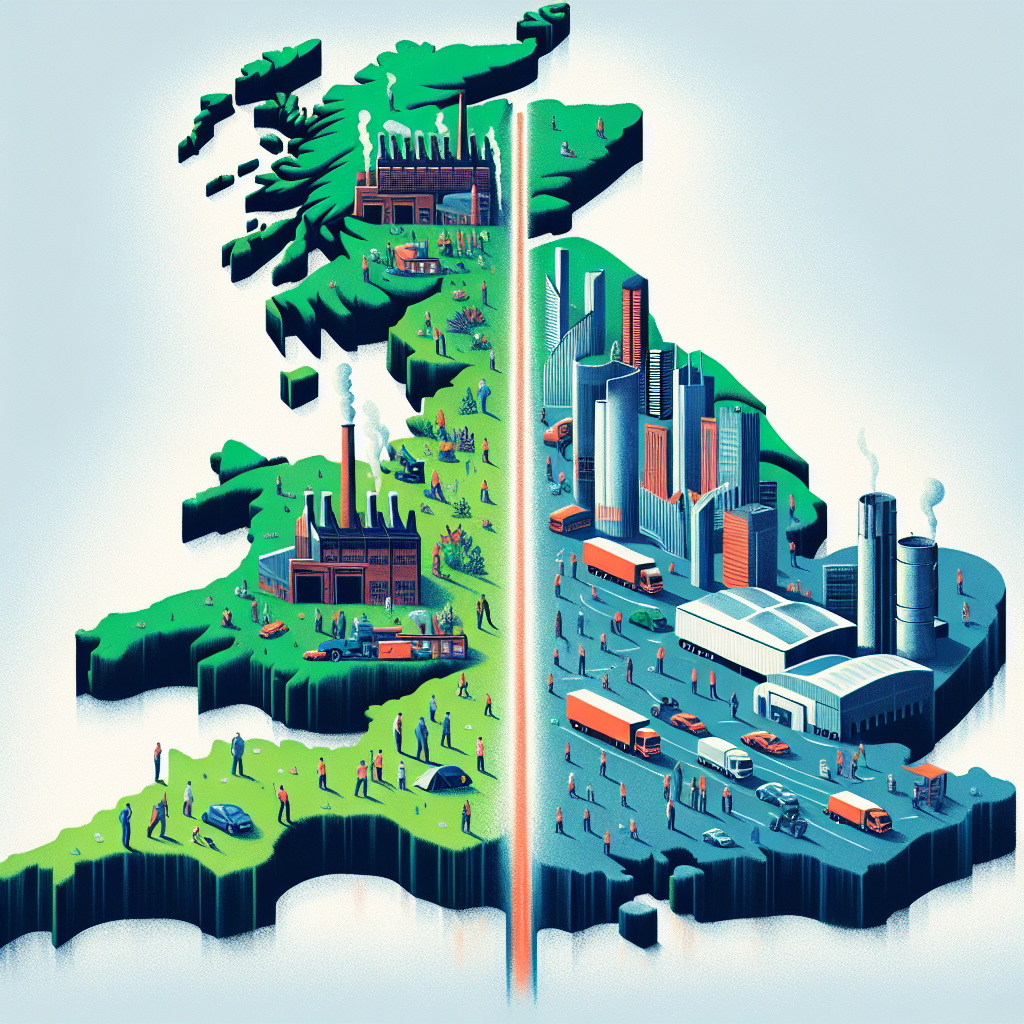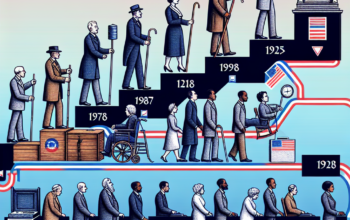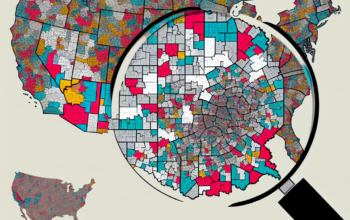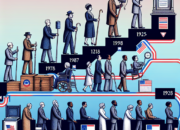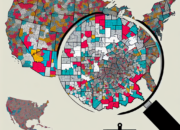Introduction
The North-South Divide refers to the long-standing economic and political disparities between Northern and Southern England, a phenomenon that continues to shape UK politics in 2025. The differences manifest in various forms, from income levels and employment opportunities to educational attainment and health outcomes. As the UK grapples with post-Brexit adjustments and the impacts of the COVID-19 pandemic, understanding these inequalities is crucial for shaping future policies and fostering national unity. This article delves into the historical context, contemporary challenges, and potential policy solutions to bridge the North-South Divide in UK politics.
Historical Context of the North-South Divide
The roots of the North-South Divide can be traced back to the Industrial Revolution, when the North of England became the hub of manufacturing and heavy industries, while the South, particularly London and its surroundings, saw a rise in financial services. This economic segregation created a wealth disparity that has persisted over the decades. By the 1980s, the decline of traditional industries in the North led to widespread unemployment and economic stagnation, contrasting sharply with the booming financial sector in the South.
In the decades that followed, various governments attempted to address these disparities through regional policies and investment in infrastructure. However, many of these efforts yielded mixed results. For instance, initiatives such as the Urban Development Corporations aimed to rejuvenate Northern cities but often fell short of delivering sustainable economic growth. By 2025, despite interventions, the divide remains apparent, with the North still lagging behind in terms of GDP per capita, average salaries, and overall economic output compared to the South.
The Economic Impact of the North-South Divide
The economic consequences of the North-South Divide are profound and multifaceted. In 2025, statistics revealed that regions such as the North East and West Midlands experienced significantly lower average household incomes than the South East, which continued to thrive due to its robust financial services sector. Furthermore, unemployment rates remain stubbornly higher in Northern regions, exacerbating issues related to poverty and social mobility.
These economic disparities have far-reaching implications for local economies and public services. The North often struggles with underfunded education and healthcare systems due to lower local tax revenues, creating a vicious cycle of disadvantage. As the population ages and economic challenges mount, the pressing need for targeted investment in the North is more critical than ever. Bridging this gap is essential not just for the North but for the UK’s overall economic resilience and social cohesion.
Political Responses to the North-South Divide
In response to the North-South Divide, UK politics has witnessed various strategies aimed at addressing these inequalities. The Conservative government, particularly since their election in 2019, has emphasized “levelling up” as a key policy priority. This ambitious agenda aims to redistribute economic resources, improve infrastructure, and enhance public services in the North. However, critics argue that funding has often fallen short of expectations, and many projects take longer than anticipated to deliver tangible benefits.
Moreover, the Labour Party, traditionally seen as a champion of the North, has sought to reclaim its historical support by advocating for policies aimed at economic justice. The 2025 manifesto highlighted the need for investment in green jobs and sustainable industries in Northern towns to adapt to changing economic realities while addressing climate change. This political tug-of-war showcases the significance of the North-South Divide in shaping contemporary UK political discourse.
The Socio-Cultural Dimensions of the Divide
Beyond economics, the North-South Divide encompasses socio-cultural dimensions that further complicate UK politics. In 2025, regional identity plays a pivotal role in public sentiment, with many Northern residents feeling marginalized by policies that primarily benefit the South. This feeling of underrepresentation has sparked movements advocating for greater autonomy and voice within the political landscape, exemplified by the growing calls for devolution and localized decision-making powers in Northern regions.
Social mobility also varies dramatically across the divide. While London is often viewed as a melting pot of opportunity, many young people in Northern cities grapple with limited prospects. Educational attainment disparities contribute to this situation; Northern students frequently have lower access to high-quality educational institutions and resources, further entrenching socio-economic inequalities. By fostering a more equitable education system, the UK can work towards dismantling the barriers that perpetuate the North-South Divide.
Strategic Solutions to Bridge the Divide
Addressing the North-South Divide will require strategic, multi-faceted solutions that engage various stakeholders, including government, businesses, and local communities. One potential solution is enhanced investment in education and skills training in the North to equip the populace with the competences necessary for the evolving job market. By fostering a skilled workforce, businesses will be more inclined to invest and create job opportunities, leading to economic revitalization in Northern regions.
Infrastructure development is another critical area for government focus. Upgrading transport links between the North and South can facilitate economic activities, making it easier for businesses to operate across regions. Projects such as Northern Powerhouse Rail have been proposed to connect cities like Manchester, Leeds, and Newcastle more efficiently, potentially boosting economic collaboration and growth.
Lastly, promoting green investments and sustainable industries within the North can align with the global shift towards a greener economy. As the UK continues to commit to ambitious climate goals, investing in renewable energy and green technology in the North can create employment opportunities while addressing regional economic disparities. By harnessing local resources and expertise, Northern communities can play a vital role in the UK’s overall transition to a more sustainable future.
Conclusion
The North-South Divide remains a pressing issue in UK politics as of 2025, rooted in complex historical, economic, and socio-cultural factors. The disparities in wealth, opportunities, and resources have significant implications for national unity and social cohesion. However, through targeted investments in education, infrastructure, and sustainable industries, there lies an opportunity to bridge this divide. Both political parties must work collaboratively, putting aside partisan differences to forge a path towards meaningful change. Only by prioritizing equitable development can the UK truly overcome the challenges posed by the North-South Divide.
FAQs
What is the North-South Divide in the UK?
The North-South Divide refers to the economic and social disparities that exist between Northern and Southern regions of England. Historically, the North has been characterized by industrial decline, while the South, especially London, has thrived economically, leading to unequal income levels and public services.
Why does the North-South Divide matter in UK politics?
The North-South Divide is crucial in UK politics as it influences policy decisions, party strategies, and electoral outcomes. Addressing these inequalities is essential for promoting social justice, economic growth, and national cohesion.
What strategies have been proposed to address the North-South Divide?
Proposed strategies to bridge the North-South Divide include increasing investment in education and skills training, developing infrastructure links, and promoting green industries in Northern regions to stimulate economic growth and improve local living standards.
